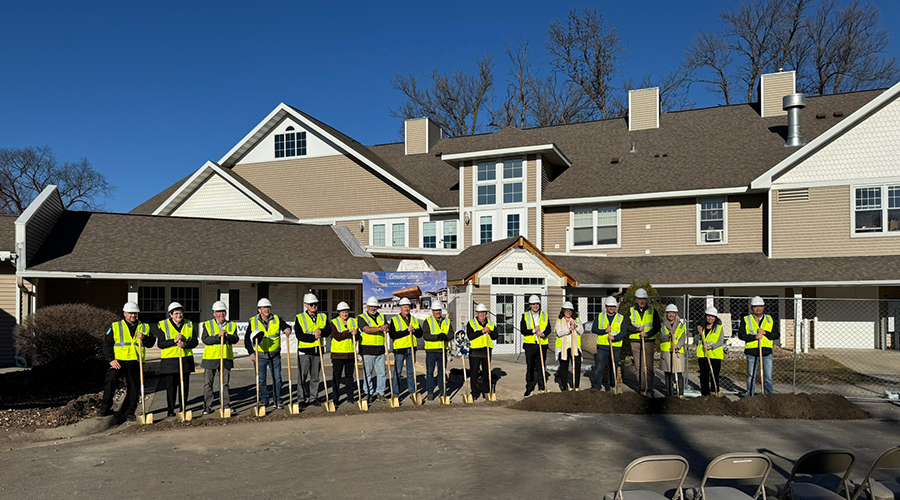As building and safety requirements for healthcare infrastructure become increasingly complex and require deeper levels of expertise, it is more important than ever for stakeholders in the design and construction process to leverage new technologies and drive efficiencies.
Healthcare infrastructure has considerably more regulations and nuances compared to other sectors. There are additional practitioners, such as infection control specialists, numerous authorities having jurisdiction (AHJ), and ergonomic and health considerations to ensure facilities are safe, durable and accessible and that they maintain a high level of uninterrupted patient care. The process requires varying professionals with healthcare-specific expertise, and collaboration among all involved parties is critical.
Digital benefits
For fire and life safety codes that are the backbone of building processes, emerging technologies and digital tools are bringing everyone together digitally. Online codes and standards platforms can ensure all stakeholders are collaborating on the same set of criteria from the earliest possible touchpoint to ensure compliance and ultimately lead to better patient outcomes. Digitized codes and standards can bring these three benefits to healthcare infrastructure.
Documenting AHJ approvals and equivalencies. The healthcare sector has more AHJs than most other industries. With other building types, organizations can build to the locally adopted building code, work with the building department and local fire inspector, and get the building approved.
In healthcare, there is additional involvement from the state department of health, the Centers for Medicare and Medicaid Services, different accreditation organizations and more. Each of these parties might have different code requirements and interpretations, and it is not uncommon for there to be equivalencies and allowances by an AHJ to use alternative means to meet a specific code or standard. This combination of requirements makes the design and construction process even more complex.
With so many AHJs involved, it is critical that design and construction teams can capture equivalencies, allowances, approvals and other notes in an organized, well-documented manner that provides visibility to all relevant stakeholders.
Healthcare teams need an interactive platform where they can house these notes and locate them quickly when questions arise. Luckily, digital hubs enable teams to add searchable notes — such as, “XYZ was approved by local fire marshal on this date” — alongside sections of code to document these approvals and equivalencies.
This tactic can be especially helpful during inspections if teams need to provide evidence of how certain building aspects meet code requirements. Digitizing this process helps reduce miscommunication, resolve disputes faster and complete projects quicker while ensuring all building and life safety aspects are accurate and up to code.
Providing visual aspects and situational navigation. Digital tools are adding interactive visual elements that bring codes and standards to life. Healthcare design and construction teams now can look at interactive renderings of patient corridors, nurses’ stations, operating rooms, medical gas zone valves and patient rooms, and they can hover over an element of the room to see the specific code requirements for that element.
For example, in a patient room visualization, a user can hover over privacy curtains and learn about considerations from a fire and life safety perspective across a number of codes and standards, such as requirements to ensure privacy curtain placement does not interfere with the sprinkler system.
Digital situational navigation not only adds a visual aspect and a new way to ingest information. It also provides building teams with a centralized list of things they need to consider when working on a specific element of a facility. This feature can help ensure that proper requirements are adhered to in the earliest stages of the design and construction process.
Enhancing knowledge transfer. It takes years of hands-on experience, trial and error and learning to master the complexity of designing and constructing healthcare infrastructure. Luckily, there is a huge opportunity for digitized codes and standards to help democratize veteran knowledge and disseminate it to new employees.
Veteran designers can compile notes from experience on past projects, bookmark those notes and create collections for other team members to study. This way, they can share specific learnings around infection control or patient-centered room design with the wider team so they are better prepared for the next project. This strategy can help to streamline training and onboarding, avoid repeating past mistakes and complete projects more efficiently.
Creating a digital history also ensures expertise does not disappear from an organization when its most experienced employees leave or retire. Digital tools enable a 45-year veteran to easily create a lasting knowledge base instead of taking a note-filled book out the door on retirement day.
Every minute not spent on compliance can be put back into patient care and driving better health outcomes. As the healthcare sector continues to bounce back from the pandemic and erect new facilities that had been on hold, digital tools are helping teams better collaborate, document information, visualize requirements and retain veteran expertise. With the help of these tools, all stakeholders can work more efficiently to ensure new healthcare infrastructure is safe, durable and built to provide the highest level of care.
Jonathan Hart is technical lead for fire protection engineering with the National Fire Protection Association.

 Healthcare Is the New Retail
Healthcare Is the New Retail Bridgeway Behavioral Health Services Launches Campaign to Renovate Health Center
Bridgeway Behavioral Health Services Launches Campaign to Renovate Health Center Ground Broken for New North Dakota State Hospital
Ground Broken for New North Dakota State Hospital AI Usage for Healthcare Facilities
AI Usage for Healthcare Facilities Ground Broken on Pelican Valley Senior Living Modernization Project
Ground Broken on Pelican Valley Senior Living Modernization Project